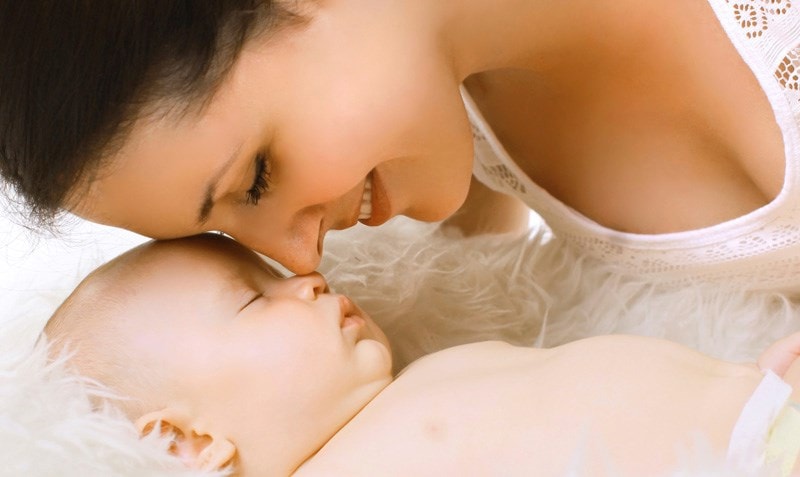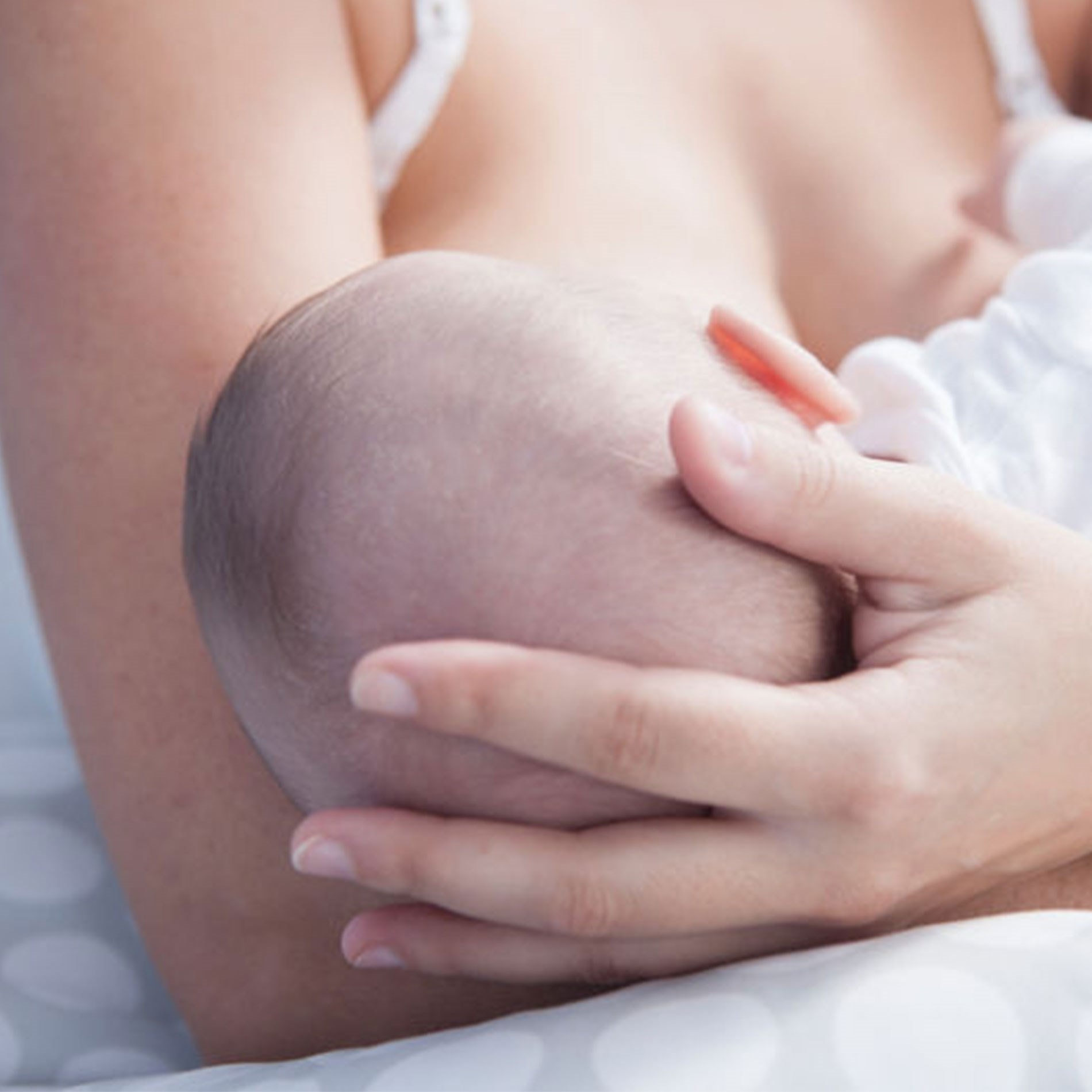Vaginal Birth & Baby's Health
‘Microbirth’ is a thought- provoking documentary film investigating the microbial changes, and the consequent effect on our microbiome, that take place during childbirth. It’s presently being premiered in midwifery and natural childbirth centres all over the world, and it seeks to help redirect our approach to childbirth.
The documentary raises the following question: considering we are such an incredible species with the ability to cure, create and extend life, why are we sicker than ever before? The researchers present us with the notion that we are facing a huge health crisis. The rise of non-communicable diseases, such as diabetes, cardiovascular disease, obesity, coeliac and mental health disorders, are already responsible for 63% of deaths globally. This is predicted to rise by another 17% in the next decade1.
But why? We already know that smoking, alcohol, poor diet and lack of exercise can contribute to these diseases, but are we missing a link somewhere? The film talks about the possibility of our gut bacteria playing a larger part than originally thought in our general wellbeing. In particular, Microbirth focuses on the link between the bacteria passed from mother to baby during natural birth, and our overall health status. Whether or not this link is as strong as the film would suggest is still up for debate. However, we are excited to see more attention being paid to the significance of our natural bacteria, its role in our health, and the part childbirth has to play in this delicate balance.
Take a look at Dr. Kate Stephen’s blog for a greater understanding of the role of the microbiome in childhood.
Within this article:
- The microbiome
- C-sections and vaginal births
- The role of probiotics during pregnancy
- Suggestions which may help support your baby’s microbiome
The microbiome
We now know that our body's human cells are outnumbered by our microbes, or bacterial, cells. We are, in fact, more bacterial DNA than human. And as our environment is a finely balanced ecosystem, so is our microbiome; our internal bacteria. We have about 1000 species of bacteria in our gut, 700 in our mouth and 700 on our skin. This diversity keeps the microbiome and its ‘owner’ healthy. Interestingly, this is in fact mirrored in the ecosystems in our environment.
Our microbiome is responsible for upregulating our metabolism and has a crucial role in our immunity. It’s the diversity that is key to this health benefit. Research suggests that western populations, in particular, have now lost 1/3 of this diversity. This phenomenon is known as the ‘disappearing microbiota hypothesis’, and is believed to be one of the reasons for increasing ill health.
So where does the microbiome actually come from? Scientists previously believed that the womb was a sterile environment. It was thought that before birth, bacteria gathered in the mother’s vaginal tract and breast ducts, and when the baby was born this bacteria was either ingested or taken on to the skin. This process commenced the ‘seeding’ of the baby’s microbiota with that from the mother, and was considered to be the beginning of an incredible process to create the child’s bacterial diversity.
This theory has recently been bought in to question, however, as scientists have found signs that the womb may actually contain some bacteria. These bacteria would have translocated there via the placental barrier. To read more on this fascinating advance in knowledge, read Kathy’s blog: Contact with bacteria in the womb.
Skin-to-skin contact after birth is also considered important for the transference of bacteria between mother and child, as is breastfeeding. Breast milk actually contains a carbohydrate (oligosaccharide), which is indigestible by the baby and has always confused scientists as to its purpose. However, remarkably these carbohydrates feed and nourish the bacteria that the baby has just gained. Read more about oligosaccharides on the page: What are prebiotics? This is a fascinating natural process, priming the baby with the right bacteria and ultimately with a healthy immunity and metabolism. We now know that this is how bacterial populations are passed from one generation to the next. The producers of ‘Microbirth’ talk about this seeding of the microbiome, and describe it as a 'maternal heritage'.

C-sections and vaginal births
Many mothers believe that vaginal births are preferable for the health of both herself and her baby, because Caesarean sections (C-sections) can be more ‘emotionally stressful’ for the baby. However, a huge factor, if not the main factor, differentiating C-sections and vaginal births is the question of the mother's bacteria passing on to the baby. The documentary goes on to outline that C-section deliveries prevent the baby from being seeded with healthy bacteria from the mother’s microbiome. We know that a depleted or unbalanced microbiome can be linked to several non- communicable diseases developed later in life, such as metabolic syndrome and even cardiovascular disease2. So could this be the missing link? We are facing a sharp rise in this method of giving birth, with ¼ of women in the UK and ⅓ of women in the US now having C-sections rather than natural vaginal deliveries.
‘Microbirth’ challenges us by asking the difficult question: Does a C-section birth break the natural chain of microbiome development? And will the increasing number of C-sections have long- term ramifications for our health?
It is, however, important to stress that C-sections are, of course, at times necessary, and indeed life-saving, for baby, mother or both. It is essential to follow the guidance of one's midwife and doctors, and it's also vital that the mother feels comfortable and able to make a decision with regards to her baby's birthing process.
The role of probiotics during pregnancy
Mothers can take probiotics whilst pregnant to help enhance their natural bacteria before birth. Read Dr. Kate’s blog to learn more about taking probiotics during pregnancy, and how this can benefit both mother and baby.
New clinical research studies are being conducted regularly, and there is increasing interest in the role that probiotics can play in a healthy pregnancy. One human clinical trial3 showed that taking the probiotic strain Lactobacillus rhamnosus HN001 increased immune markers, both in the placental cord blood and also in the breast milk of expectant mothers. Health professionals can learn more about the research behind this strain over in the Probiotics Database: L. rhamnosus HN001.
A further in-vitro study showed that L. acidophilus Rosell-52 can adhere to the cervical lining and prime the mother for passing on her microbiome4. Health professionals can learn more about the research behind this strain over at the Probiotics Database: L. acidophilus Rosell-52.

Researchers at Harvard University are also investigating the possibility of assisting with the transfer of the mother's bacteria, when a vaginal birth has not been possible. They do this by leaving a swab in the mother’s vagina for an hour before the C-section is performed. Once the baby is born, the swab is then passed over the baby’s mouth and rest of body and in this way the bacteria are transferred. This is a 3-year study that is still in its infancy, but the early results have shown that the ‘swabbed’ babies had more similar bacteria levels to natural birth babies than to other C-section babies.
The fascinating ‘Microbirth’ documentary is yet another step forward towards a fuller understanding of the diversity, origin and function of the microbiome.
Suggestions which may help support your baby’s microbiome
- Consider supplementing yourself with a probiotic when pregnant and if breastfeeding
- Breastfeed where possible
- Eat a diet rich in probiotics and prebiotics
- Avoid douching – this practice destroys the natural vaginal bacteria
- Encourage skin-to-skin contact straight after birth – ask for this to be written into your birth plan. It is suggested that this may support the development of your child’s microbiome by reducing stress after birth and exchanging bacteria from mother’s skin to baby
. - Avoid bathing a new-born for at least 24 hours, and after that, consider using only plain water for the first 3 months5
- Cut down on anti-bacterial products in the home as this destroys your natural bacteria6.
- Avoid giving your child antibiotics where possible, but of course always follow the advice of your doctor
For related reading, you may also be interested to read our take on the BBC's programme about gut bacteria and allergies.
References
- World Economic Forum. 2014. The Global Economic Burden Of Non-Communicable Diseases. [online] Available at: <https://www.weforum.org/reports/global-economic-burden-non-communicable-diseases> [Accessed 7 September 2014].
- Carding S et al. (2015). Dysbiosis of the gut microbiota in disease. Microb Ecol Health Dis. 26: 10.3402/mehd.v26.26191.
- Prescott SL et al. (2008). Supplementation with Lactobacillus rhamnosus or Bifidobacterium lactis probiotics in pregnancy increases cord blood IFNy and breast milk transforming growth factor B and immunoglobin A detection. Clinical and experimental Allergy , 38 (10): 1606- 1614.
- Atassi F. et al. (2006). In vitro antibacterial activity of Lactobacillus helveticus strain against diarrhoeagenic, uropathogenic and vaginosis-associated bacteria. Journal of Applied Microbiology. 101 647–654
- MidwifeThinking. 2014. The Human Microbiome: Considerations For Pregnancy, Birth And Early Mothering. [online] Available at: <https://midwifethinking.com/2016/04/13/the-human-microbiome-considerations-for-pregnancy-birth-and-early-mothering/> [Accessed 7 September 2014].
- Tavernise, S., 2013. F.D.A. Questions Safety Of Antibacterial Soaps. [online] Nytimes.com. Available at: <https://www.nytimes.com/2013/12/17/health/fda-to-require-proof-that-antibacterial-soaps-are-safe.html> [Accessed 7 September 2014].
- image sources: blog.mariobadescu.com/post-pregnancy-skin-care/ and http://www.precisionnutrition.com/exercise-during-pregnancy


